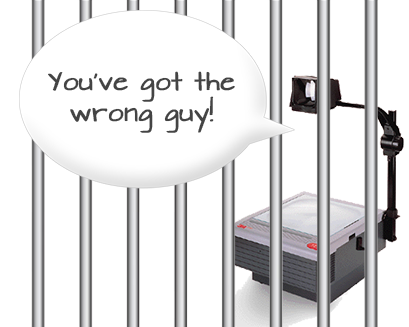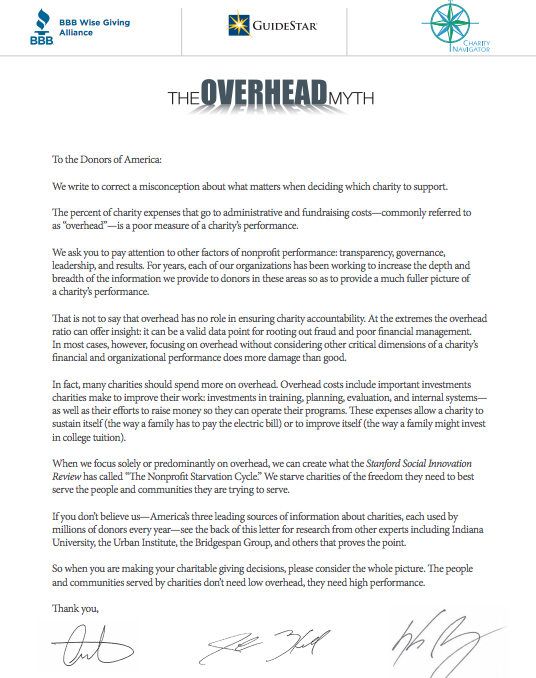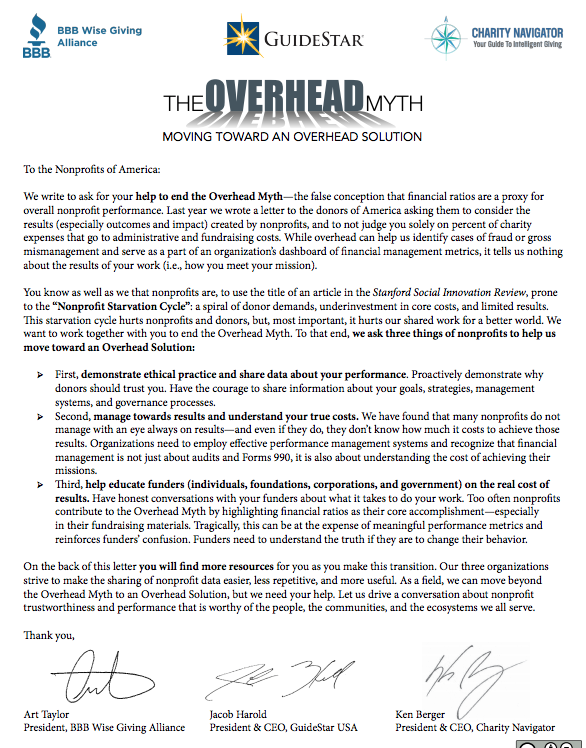This article is part of a series titled “Lessons from the Biz World” where we explore valuable aspects of the for-profit sector we can apply to nonprofit management and translate into a more efficient, stable and successful organization with a greater impact.
There’s a big double standard when it comes to overhead at for-profits and nonprofit organizations. Where investment decisions regarding overhead might be no-brainers in the for-profit sector, they often come with much scrutiny in the nonprofit arena.
Lessons from the Biz World
For-profit business practices offer many valuable lessons that can be applied to nonprofit management. In this series we look at how these can translate into a more efficient, stable and successful organization with a greater impact.
Lesson 1: Manage capital wisely
Lesson 2: Invest in good people
Lesson 3: Track & measure EVERYTHING
Lesson 4: Utilize branding strategies
Lesson 5: Manage your donor base like customers
Lesson 6: Overhead ain’t bad
Lesson 7: Embrace resistance
Contributors
“There is a perception out there that you need to operate poor, that you need to do things not like a business would, yet people hold you to a business evaluation and standard,” says Leija.
Overhead at a nonprofit typically refers to administrative or fundraising costs. The misconception is that if a charity spends too much on overhead there will not have enough funds left to put toward the cause. This generalization, however, is not a good indicator of a nonprofit’s effectiveness because strategic investments often categorized as overhead can also be those with the biggest ROI.
Nonprofits will always be held to a uniquely high level of scrutiny, but overhead can’t be viewed as a negative. It is necessary to invest in this area to grow and make a meaningful impact. Donors expect transparency and social change.
A better indicator of a nonprofit’s effectiveness isn’t how much or how little they spend on overhead, but whether they have quality leadership and produce results that really matter.
Think about it: If a business hires a six-figure CEO who doubles profits in his first year, there is automatically a reason to celebrate. Six-figure nonprofit CEOs, however, must prove they deserve their paycheck and whether the salary is a good use of the donors’ hard-earned money. The answer again, relies on the results the nonprofit CEO can achieve. If the CEO can dramatically increase fundraising and outreach, then that investment is more than worthwhile.
 The Overhead Myth
The Overhead Myth
This concept it best summed up in a letter published in 2013 from leaders of three leading sources of information on nonprofits – GuideStar, Charity Navigator, and BBB Wise Giving Alliance.
Addressed “To the Donors of America,” the letter discusses the “Overhead Myth” where donors mistakenly judge a nonprofit’s performance based solely on the percentage of charity expenses that go towards administrative and fundraising costs, instead of considering the overall outcomes and impact it creates.
More recently, the same group of leaders released a second letter directed “To the Nonprofits of America,” where they outline a three-point plan to help charities work towards what they call the “Overhead Solution.” Below is an excerpt from the website, overheadmyth.com:
“We invite the nonprofits of America to do their part to focus donors’ attention on what really matters: your organization’s efforts to make the world a better place. We ask nonprofits and the social sector at large to join us as we move toward an Overhead Solution.”
The three steps outlined in the letter include:
Promote ethical practices and share data about your performance – Building a healthy and thriving nonprofit starts from within by incorporating ethical practices from the ground up. Be proactive about explaining why donors should trust you and maintain transparency about your goals, strategies and management systems.
- Manage towards results and understand your true costs – Just like a for-profit company, your organization should have a hyper-focus on results, while keeping an eye on how much it costs to get there. A recent survey from fundraising tech reviews company Software Advice found that one of the most popular metrics for measuring your costs – particularly for event fundraising – is Cost Per Dollar Raised (CPDR), which a great place to start when trying to understand your costs.
- Help educate funders on the real cost of results – Transparency is also key here. Be open and honest with all your donors (individuals, foundations, corporations and government) about how much is costs to fulfill your mission.
Takes Money to Raise Money
In the end, it’s important to realize that just like the in the business world where it takes money to make money, it also takes money to raise money and then fulfill your mission.
This mantra is particularly significant when it comes to event fundraisers – which often require extreme amounts of time, resources and money to put on. And yet, Nonprofits continue to make big investments in their annual charity auction gala because it works!
…and we can help.
You may not know this but Winspire started as an event and auction production company, so we know how difficult it is to pull off a successful fundraising event. In fact, it’s one of the reasons we began offering our fundraising service to nonprofits.
Our travel packages are designed to complement your auction strategy, which is why procuring other quality items is still vital to the success of your event. That’s why we try to create valuable event fundraising resources to help you and your team make the most of your events.
Check out our most popular resource below – a free eBook on procuring the best quality auction items for your next charity event.
{{cta(‘8ee7d503-c9ba-4b63-83cd-0d389f063597′,’justifycenter’)}}







